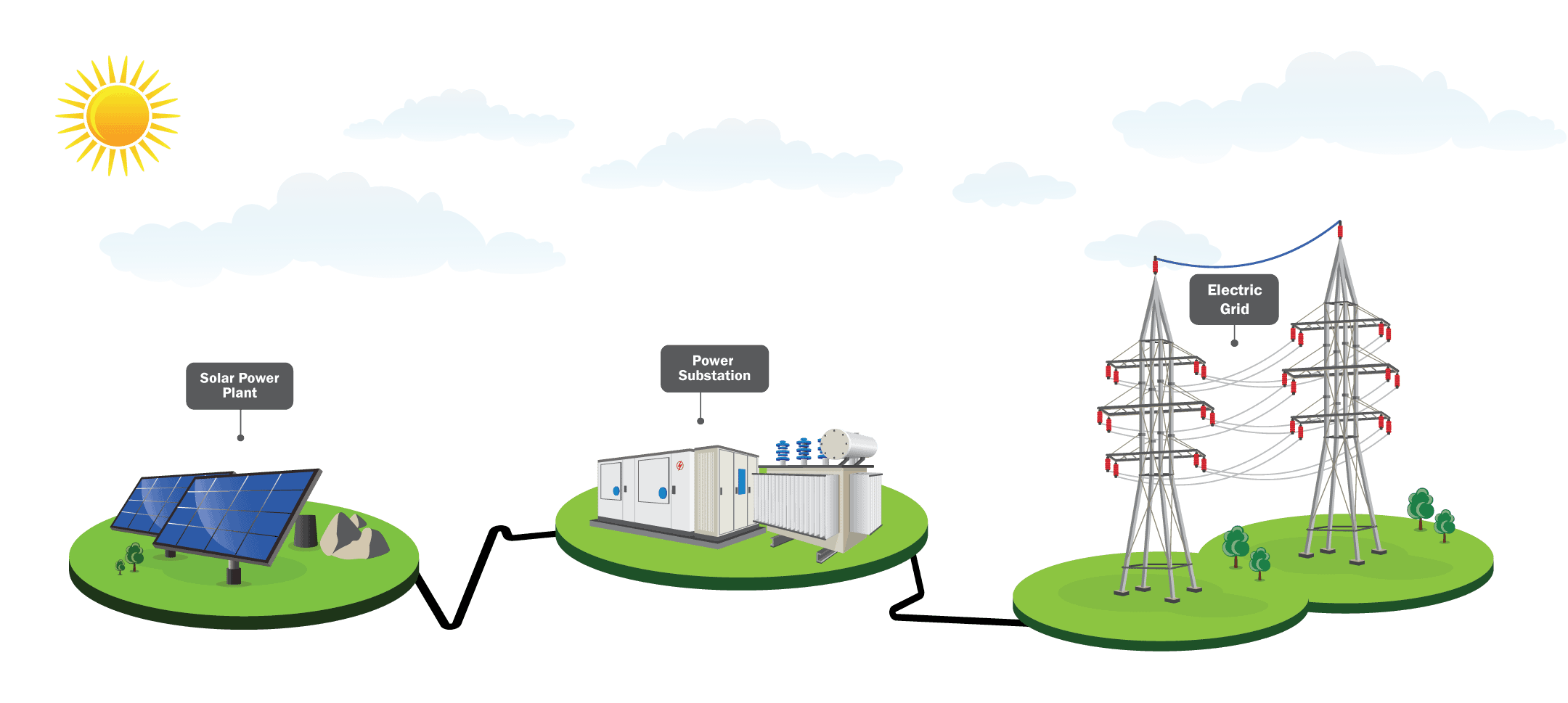Commercial and Utility-Scale Solar Energy Production
The solar industry efficiently produces energy for a wide range of commercial sectors, each of which benefits from diversifying its energy sources.
The solar industry efficiently produces energy for a wide range of commercial sectors, each of which benefits from diversifying its energy sources.

Commercial solar power relies on large-scale solar photovoltaic (PV) power plants, which draw energy from hundreds of thousands of discrete panels. When the sun strikes one of these panels its PV cells absorb the energy, generating an electrical field. The electricity then passes through an inverter on its way to a battery. PV cable is a single insulated conductor used to interconnect the solar panels (or modules) in a solar farm.
Neither individual panels nor solar farms could function without a network of durable solar power wires, cables, and connectors. For this vital interconnection, solar energy wires and cables are used to connect these units and distribute the generated current. PV wiring is suitable for use in grounded and ungrounded photovoltaic power systems, generally rated up to 2 kV, in free air, raceways or direct burial in accordance with the NEC (United States) or Canadian Electrical Code. When leveraging open air installation wires, wires are tied to racking which offers a fast and cost-effective solution.
Solar panels themselves consist of frames that contain glass-covered solar cells. These cells are the units that generate charge in response to sunlight. The solar panels (or modules) interconnect, resulting in strings, and lead back to a combiner box. Monitoring systems track energy yield and alert technicians to faults. These components work together to create solar energy for commercial buildings.
Cables for solar systems are a collection of multiple solar wires bound together by a jacket. They can accommodate higher voltages and may be used for connections above or below ground. Solar cables are specifically designed to withstand harsh weather conditions, including UV rays, moisture, and extreme temperatures.
Solar cables differ based on their type, number, and arrangement of conductors, which determines their performance characteristics. Low-, medium-, and high-voltage cables are all available to fulfill different roles in a facility.
Another important distinction is whether a cable is compatible with grounded or ungrounded systems.
Selection considerations for cables are similar to those for wires:
American Wire Group has the experience you can trust in the solar energy sector. We have sold over 87 million feet of photovoltaic wire and cable in over 1,400 shipments.
AWG offers a full range of wire and cable suitable for solar power applications.
Learn more about our wire and cable solutions in our online catalog